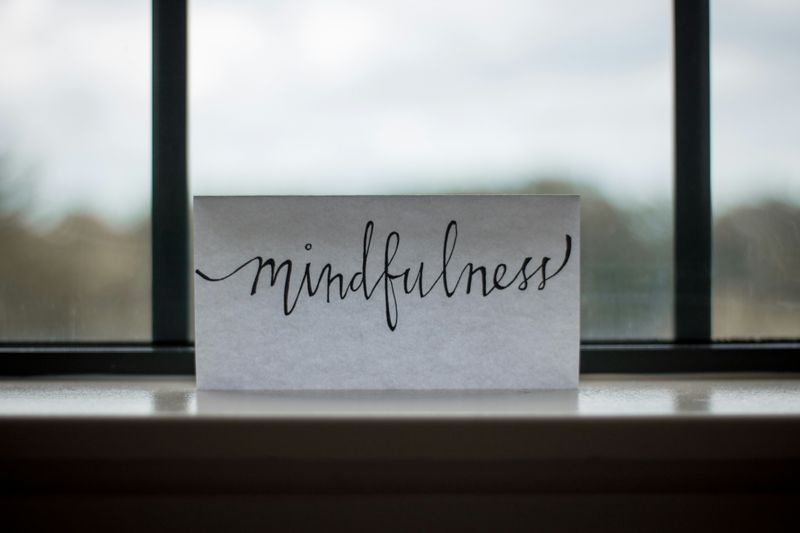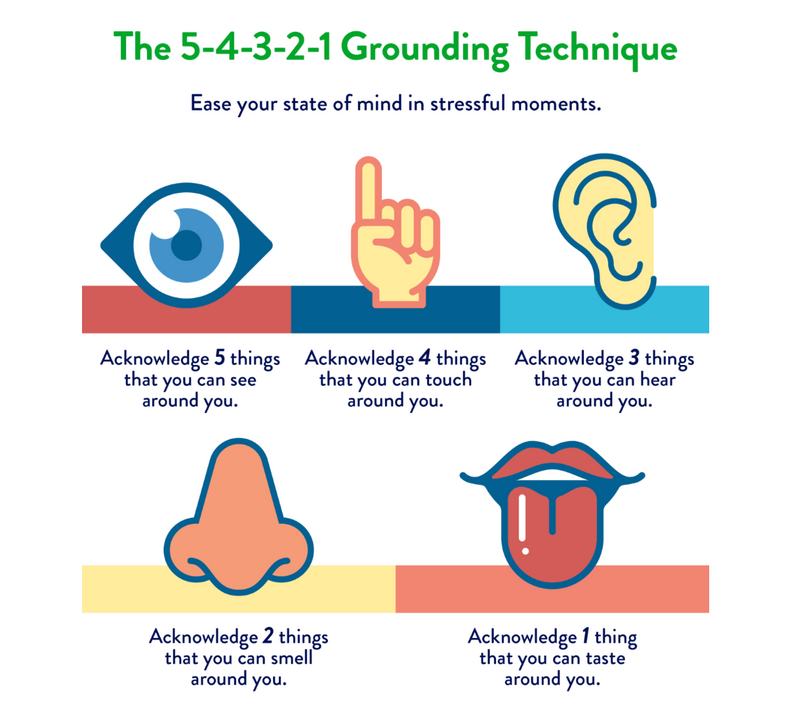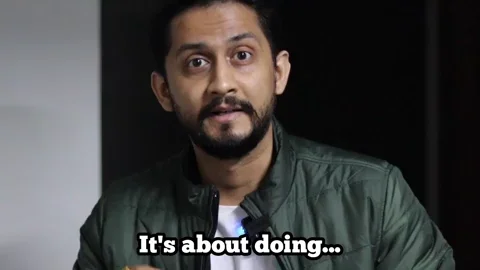Have you ever walked into a meeting feeling calm on the outside, but you feel like a storm is raging on the inside?
Imagine that you are about to have a difficult conversation with your manager. Maybe it’s about asking for a raise, addressing a conflict, or receiving unexpected feedback. Your heart is racing, your thoughts are scattered, and you can’t seem to stay calm. You know what you want to say, but anxiety is taking over.

What if there was a way to regain control and stay focused on what really matters?
This is where mindfulness can help. It is not just a trend or a quick fix. Mindfulness exercises are practical tools that help you manage stress, stay present, and handle tough conversations with more confidence and clarity.
What is Mindfulness?
 Photo by Lesly Juarez on Unsplash
Photo by Lesly Juarez on UnsplashMindfulness is a type of meditation in which you focus on being intensely aware of what you're sensing and feeling in the moment, without interpretation or judgment. Practicing mindfulness involves breathing methods, guided imagery, and other practices to relax the body and mind and help reduce stress.
— Mayo Clinic
By using mindfulness exercises, you can prepare yourself mentally before the conversation, so you feel more confident and in control.
Mindfulness Exercises to Stay Focused and Confident
Mindfulness helps you manage your emotions, stay present, and respond with clarity.
Here are some simple mindfulness exercises you can practice before your conversation (with accompanying videos and visuals to help):
1. Box Breathing (4-4-4-4 Method)
What it is: A breathing technique that calms the nervous system by regulating your breath.
How to do it:
Inhale through your nose for 4 seconds
Hold your breath for 4 seconds
Exhale slowly through your mouth for 4 seconds
Hold again for 4 seconds
Repeat for a minute or two
How it helps: Reduces anxiety, clears the mind, and helps you feel more in control.
2. Grounding: 5-4-3-2-1 Technique
 Photo by Healthy Monday
Photo by Healthy Monday
What it is: A sensory-based mindfulness practice to bring your focus back to the present moment.
How to do it:
Notice 5 things you can see around you
Touch 4 things (e.g., your desk, your clothes, your chair)
Listen to 3 sounds (e.g., office noise, your breathing, typing sounds)
Identify 2 smells (e.g., coffee, air freshener)
Recognize 1 taste (e.g., mint gum, tea)
How it helps: Stops overthinking, reduces nervous energy, and keeps you grounded.
3. Self-Compassion Affirmations
What it is: A way to replace self-doubt with self-confidence by speaking kindly to yourself.
How to do it: Before your conversation, repeat affirmations like:
“I am prepared and capable.”
“I can stay calm and communicate clearly.”
“I don’t need to be perfect. I just need to be present.”
How it helps: Shifts your mindset from fear to self-assurance.
4. Visualization of a Positive Outcome
What it is: A mental rehearsal where you imagine the conversation going smoothly.
How to do it:
Close your eyes and picture yourself speaking calmly and confidently.
Imagine your manager responding positively.
See yourself staying composed, even if the conversation is tough.
How it helps: Boosts confidence and reduces fear of negative outcomes.
 Question: What is the main purpose of practicing mindfulness before a difficult conversation?
Question: What is the main purpose of practicing mindfulness before a difficult conversation?
A. Avoid the conversation altogether.
B. Distract yourself from stress.
C. Stay present and respond with clarity.
D. Memorize exactly what you're going to say.
Quiz
Select the best answer:
Applying Mindfulness to Workplace Conversations

Mindfulness isn’t just about meditation or breathing. It’s a tool you can use to stay grounded and focused during emotionally charged moments.
When emotions run high, it’s easy to lose track of what you want to say or react in ways you might regret. Mindfulness helps you pause, manage stress, and respond with intention rather than emotion.
So how do we use mindfulness exercises in real-life situations like these?
How can you prepare your mind before stepping into the room?
What can you do in the moment to stay calm and focused?
Let’s explore four common workplace scenarios and see how mindfulness exercises can help you stay centered and confident.
Each situation includes a pre-conversation technique that helps you walk in calm and ready. You’ll also find practical tips to ground yourself during the conversation, so you can listen, speak, and respond with clarity.
1. Asking for a Raise or Promotion

Challenge ☝️
You’re nervous about advocating for yourself. You’ve worked hard, and you know your contributions matter. But when it comes time to speak up, your heart races, and doubt creeps in. What if they say no? What if you sound pushy?
Mindfulness Exercise 🧠
Use box breathing and positive affirmations. Box breathing is a simple method: inhale for four seconds, hold for four, exhale for four, and hold again for four. It helps calm your nervous system and clears your mind. Pair it with a self-affirmation like, “I deserve to be paid fairly for my contributions.”
Practical Tip 💭
Before the meeting, take a quiet moment to breathe deeply. Say your affirmation to yourself a few times. Walk in knowing your value and feeling centered.
2. Receiving Negative Feedback

Challenge ☝️
You feel defensive and discouraged. Feedback can be hard to hear, even when it’s meant to help. It’s natural to feel a bit hurt or to start thinking of ways to defend yourself right away.
Mindfulness Exercise 🧠
Use the 5-4-3-2-1 grounding exercise. This exercise brings your focus to the present moment by noticing: 5 things you see, 4 things you can touch, 3 things you hear, 2 things you smell, and 1 thing you taste. It can quiet your mind and reduce emotional reactions.
Practical Tip 💭
When the feedback starts to sting, pause and ground yourself. Take a breath and silently repeat, “This is feedback, not failure.” Stay open to learning rather than reacting.
3. Addressing a Conflict with Your Manager
Challenge ☝️
You’re worried about saying the wrong thing. Tension with your manager is uncomfortable. You want to speak up, but you're afraid of damaging the relationship or making things worse.
Mindfulness Exercise 🧠
Use visualization. Close your eyes and picture yourself in the conversation. Imagine your tone is calm, your words are respectful, and the conversation ends with understanding on both sides.
Practical Tip 💭
Before your meeting, spend a few minutes visualizing the outcome you want. Focus on staying calm and kind. Remind yourself that you're aiming for solutions, not blame.
4. Saying No to Extra Work

Challenge ☝️
You feel guilty or pressured to say yes. You’re already stretched thin, but when asked to take on more, you freeze. You don’t want to disappoint anyone, even though you know it's too much.
Mindfulness Exercise 🧠
Use self-compassion affirmations. These affirmations remind you that protecting your time and energy is okay. Saying no doesn’t make you selfish, it makes you honest.
Practical Tip 💭
Tell yourself, “Saying no is setting a boundary, not letting others down.” When the moment comes, respond with confidence. If possible, suggest a different timeline or another way to help that works better for you.
 Question: You’re about to tell your manager that you're overwhelmed with all your tasks and need some support. Before the meeting, you feel your heart racing. What will help you calm down and feel more confident?
Question: You’re about to tell your manager that you're overwhelmed with all your tasks and need some support. Before the meeting, you feel your heart racing. What will help you calm down and feel more confident?
A. Talk fast to get it over with.
B. Box breathing and repeating affirmations.
C. Avoid eye contact and keep it short.
D. Write an email instead of speaking.
Quiz
Select the best answer:
Take Action

Now that you’ve explored how mindfulness exercises can help you stay calm, focused, and confident, try using one simple strategy today to prepare for your next difficult conversation.
Whether it's box breathing to slow your thoughts, an affirmation to build confidence, or visualizing a respectful conversation, taking one small step can make a big difference.
Here are a few ways to start putting mindfulness into practice:
Your feedback matters to us.
This Byte helped me better understand the topic.

